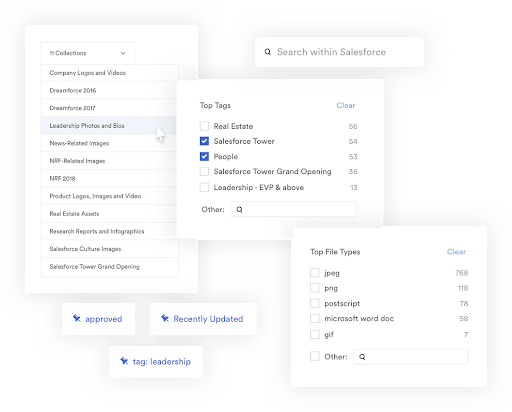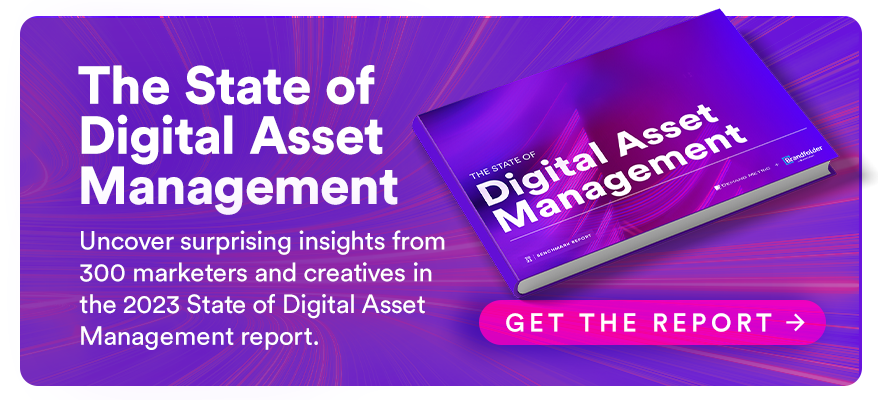Metadata Management: What It Is and How To Use It
With the explosion of big data, the rise of the cloud, distributed architectures, and the IoT, nailing metadata management is essential for gaining total control over your data ecosystem.
Metadata management is a process for managing the data that describes, well, data.
Done right, metadata management enables organizations to put insights into action by providing context, trust, and control over its data and digital asssets. It also streamlines workflows and ensures that all data is properly organized, accounted for, and secure.
In this article, we’ll define metadata management, explain how it works, and look at the benefits it brings to the enterprise.
What is Metadata Management?
Let's start with defining metadata alone. Put simply; metadata is data about data.
More specifically, metadata summarizes key details about your data, making it easier to find and edit digital files (think titles, image tags, date created, author name, etc.).
Metadata is particularly useful for managing unstructured data as it allows users to create standard naming conventions and categories for identifying and classifying a wide range of data including photos, social feeds, logs, audio, video, and customer feedback.
So, what is metadata management?
Metadata management is the process of systematically handling how organizations store, access, and use data connected to their digital assets. Essentially, it ensures that your digital files are tagged, categorized, and organized correctly, and makes it easy to find and share exactly what you need.
How Does Metadata Management Work?
People often explain metadata management by comparing it to the card catalog system used by libraries in the pre-internet era.
Back in the day, if you wanted to track down a specific book, you’d begin your search by heading straight to the library’s centralized card catalog to find its corresponding card.
On each card, you’d find details describing the book—subject, author, publication date, and so on—that would help you narrow your search to a specific floor, section, or aisle--as opposed to scouring the entire library for one item.
In this analogy, metadata is the information you’d find on each card, while a metadata management system is the catalog. When the library goes digital, it’s metadata that enables assets to be found across a scattered network of data-generating applications and repositories.
A metadata management system organizes and unifies an organization’s metadata under a range of categories, tags, vocabulary, and other fields, allowing users to quickly locate and share accurate information.
Benefits of Metadata Management for Enterprise Brands
Metadata management gives organizations a reliable system for finding, using, storing, and reusing data. While that may seem like basic utility, a metadata management system is much more than a storage solution.
Here’s a look at some of the most significant benefits it offers the enterprise:
Data governance - While metadata management only represents one aspect of data governance, it plays a crucial role in enabling business leaders to make data-driven decisions. Metadata governance also ensures that data definitions, usage, production, and storage align with regulatory, security, and quality standards.
Business glossary - Metadata management ensures that tags, categories, and naming conventions are applied across all connected systems, enabling workers--at all levels--to collaborate and communicate around business data using a common language and shared understanding.
Data lineage - Data lineage supports regulatory compliance, security, and decision-making by explaining what the data represents, why it’s there, when it got there, and how it relates to the big-picture strategy.
Tracking data lineage is especially useful for helping users understand the relationships between different types of data, monitoring system security, and detecting anomalies or unauthorized changes to the organization’s data.
Preserve data across multiple systems - Without a metadata management system in place, organizations generate silos of inconsistent, often inaccurate metadata. The problem is, without complete visibility and accurate information, users risk making decisions that aren’t based in reality.
Access valuable insights - Organizations now generate a ton of data from the various tools and technologies they use every day. Without a metadata management system, companies miss the valuable insights that could improve the customer experience or inform strategic decisions.
Manage Your Metadata With Brandfolder’s DAM Platform
Answering the question, “how to manage metadata” is much easier when you’re working with the right tools.
A big part of your metadata tech stack is finding the right digital asset management (DAM) platform--a type of software that helps organizations manage their content, creative assets, and all associated metadata from one central location.
DAM platforms integrate with all of your relevant data sources--everything from your CRM and Adobe accounts to content repositories and analytics platforms--creating a complete picture of what’s happening inside your business.
While every DAM is different, here’s a quick look at some of the tools you’ll find inside a DAM system like Brandfolder.
Store & Organize
On a basic level, a DAM creates a centralized hub for storing and organizing metadata. Most platforms offer the ability to filter, sort, and label metadata, as well as create custom fields.

In addition to those basic functions, Brandfolder offers several tools that enhance metadata organization, including:
AI auto-tagging - The platform’s AI-enabled auto-tagging feature, which automatically adds tags to digital assets upon import.
Smart Rules Engine - which allows admins to set up sequences of “if-then” rules that control the movement of digital assets when uploaded. For example, you can automatically add files to sections, labels, or collections or apply auto-tags based on specific criteria.
FTP ingest workflow - Or, if you’d rather save some time, you can set up an FTP ingest workflow to automatically pull assets from an FTP server into Brandfolder.
Access
Digital asset management platforms allow users to quickly search across a range of asset metadata, save common search terms, and use intelligent tools like filtering and automatic discovery to locate exactly what you need.
A few highlights:
In-document search - In-document search allows you to search the contents of a document for specific keywords that can immediately let you know whether it contains relevant information.
AI image recognition - Brandfolder’s built-in AI automatically tags assets as they come in, making it easy to search for images with a certain set of criteria quick and easy.
Thumbnailing - Thumbnails are automatically generated and added to assets upon upload, allowing users to search their asset library by transforming it into a visual grid they can quickly scan to find what they’re looking for. Edit & Convert
Brandfolder offers several features that streamline the process of editing and converting files.
The platform automatically manipulates and converts files to your specifications upon export and allows users to edit & merge files in bulk from a centralized location.
Metadata conversions - Users can set custom rules that automatically convert metadata into custom fields or Brandfolder tags to simplify asset management and streamline the search and discovery experience.
Automatically resize assets - Automatically crop digital assets to preset or custom sizes. This allows you to generate images that match Instagram, Facebook, LinkedIn, Twitter, and Pinterest specs.
Video editing - Edit video files from your Brandfolder account—users can pull clips, transcode, and add watermarks to videos from inside the platform’s editing tool.
Adobe integration - Brandfolder integrates with the Adobe Creative Cloud, including Photoshop, InDesign, and Illustrator, allowing users to edit, share, and set permissions for digital assets directly from Brandfolder.
Control
Finally, a DAM system should come with features that control your brand, protect customer data, and ensure compliance with regulatory requirements.
Templates - Users can export templates and set rules that control which sections can be edited, thus allowing customer-facing teams to quickly generate and share personalized content without undermining brand guidelines.
Approval flows - Admins can set rules requiring approval before an asset is published, automatically send notifications, and set approval flows by integrating with workflow platforms like Jira and InMotion Now.
Custom portals - Admins can curate content collections of assets and external destinations based on department or use case by setting up portals. This makes it even easier for stakeholders to find the files, and data, most relevant to their role.
Brandfolder’s intuitive DAM platform simplifies metadata management, making it easy to manage, distribute, and track digital assets and measure their impact on the bottom line.

